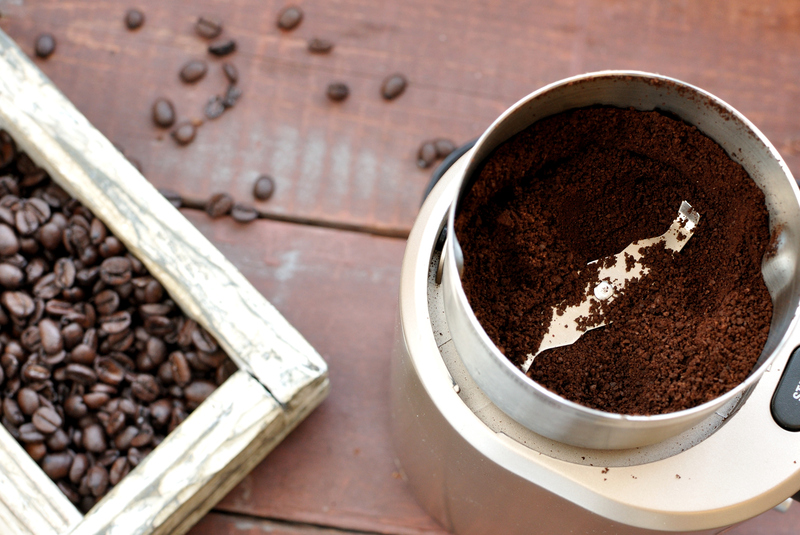Master the Art of Keeping Your Bathroom Mold-Free
Posted on 30/09/2025
Master the Art of Keeping Your Bathroom Mold-Free
Bathroom mold is more than just an unsightly nuisance—it can impact your health, damage your property, and lower your home's value. Keeping your bathroom mold-free may seem like an ongoing battle, but with expert strategies and a vigilant approach, you can keep mold at bay for good. In this comprehensive guide, you'll uncover everything you need to know to prevent mold in the bathroom, tackle existing issues, and maintain a fresh, healthy home environment.

Understanding Bathroom Mold: Why Bathrooms Are Vulnerable
Mold is a type of fungus that thrives in warm, damp, and humid places—characteristics that make bathrooms a prime breeding ground. Every time you shower or run the hot tap, condensation forms on walls, ceilings, and fixtures, providing the perfect habitat for mold growth.
- Humidity: Hot baths and showers drastically increase bathroom moisture levels.
- Poor Ventilation: Inadequate airflow prevents surfaces from drying out quickly.
- Organic Materials: Dust, soap scum, and even wallpaper glue provide food for mold spores.
Understanding the causes of bathroom mold is the first step in mastering how to keep your bathroom mold-free.
Why Mold in the Bathroom is a Serious Issue
While a few dark specks on your tiles may seem harmless, unchecked mold growth can lead to several problems:
- Health Risks: Mold spores can trigger allergies, asthma, and other respiratory issues, especially in children and those with weakened immune systems.
- Structural Damage: Mold can deteriorate drywall, grout, and sealants, leading to costly repairs.
- Reduced Home Value: Persistent mold problems can scare away potential buyers and lower your property's worth.
It's clear that learning how to prevent mold in your bathroom is essential for your health and your home's integrity.
Top Causes of Bathroom Mold
1. Insufficient Ventilation
Without proper airflow, moisture lingers, and mold multiplies. If your bathroom doesn't have an exhaust fan or isn't frequently aired out, you're giving mold its favorite environment.
2. High Humidity Levels
Humidity over 60% is a red flag for mold, making routine steamy showers and baths a culprit for quick mold growth.
3. Leaky Fixtures or Plumbing
Dripping faucets, leaking pipes, or poorly sealed tiles allow water to seep behind walls and under floors, where unseen mold can thrive.
4. Damp Surfaces
Bathroom mats, towels, and wood trim that remain damp create perfect conditions for mold colonies.
5. Soap Scum and Organic Debris
Mold feeds on soap, shampoo residue, and dust, so failing to keep surfaces clean turns your bathroom into a mold buffet.
Spotting Mold: Signs You Shouldn’t Ignore
Early intervention is key! Keep an eye out for these warning signs of mold in your bathroom:
- Black, green, or brown spots on tiles, grout, ceilings, or around windows.
- Persistent musty or earthy odors even when your bathroom appears clean.
- Peeling paint or wallpaper, or bubbling drywall.
- Excess condensation on mirrors or windows.
- Warped or discolored walls and flooring.
*If you notice any of these signs, act quickly to stop the problem from worsening.*
Essential Steps to Keep Your Bathroom Mold-Free
1. Boost Ventilation
- Install an Exhaust Fan: Use it during and after showers for at least 30 minutes to reduce moisture.
- Open Windows: Let outside air circulate to speed up drying.
- Keep Doors Open: Allow air to flow freely between the bathroom and the rest of your home.
2. Control Humidity
- Use a Dehumidifier: Especially in bathrooms without windows.
- Monitor Humidity: Invest in a hygrometer and keep levels below 50%.
- Dry Surfaces: Wipe down tiles, mirrors, and countertops after use.
3. Fix Leaks Promptly
- Check Fixtures Regularly: Inspect under sinks, around toilets, and behind bathtubs for drips or water stains.
- Seal Gaps: Use waterproof silicone caulk to seal around tubs, showers, and sinks.
4. Clean and Disinfect
- Scrub Tile and Grout: Use a bathroom cleaner or a mix of vinegar and baking soda once a week.
- Wash Shower Curtains: Replace or clean them regularly, especially if they're fabric.
- Clean Drains: Monthly cleaning with baking soda and vinegar prevents clogs and organic buildup.
5. Replace and Upgrade Materials
- Opt for Mold-Resistant Paint: Repaint walls and ceilings with a mold-inhibiting formula.
- Choose Mold-Resistant Caulk and Grout: These products are less likely to harbor mold over time.
- Swap Out Old Mats, Towels, and Linens: Wash these items regularly and replace when necessary.
The Best Mold-Preventing Habits
- Hang towels and mats to dry immediately after use. Never leave wet items balled up in the bathroom!
- Squeegee shower walls and doors each time you finish bathing to remove lingering moisture.
- Declutter: Limit cosmetics, bottles, and other items on counters and in the shower to reduce places for mold to hide.
- Always use the exhaust fan or open a window when showering or bathing.
- Deep clean your bathroom once a week and inspect for signs of mold every month.
Natural Solutions to Prevent Bathroom Mold
If you prefer to keep your home chemical-free, these natural remedies for keeping your bathroom mold-free are safe and effective:
- White Vinegar: Spray undiluted vinegar on tiles, grout, and fixtures, let sit for an hour, then scrub and rinse.
- Baking Soda: Mix with water to create a paste, apply to problem areas, scrub, and rinse.
- Hydrogen Peroxide (3%): Spray on affected surfaces, leave for 10 minutes, and wipe clean.
- Tea Tree Oil Solution: Combine one teaspoon with a cup of water, spray, and leave to dry—no rinsing needed.
When to Call in the Professionals
Minor mold issues can usually be handled with diligent cleaning, but if you suspect extensive mold infestations—especially hidden inside walls or under flooring—call a mold remediation expert. Situations requiring professional help include:
- Widespread visible mold (covers more than 10 square feet).
- Recurring mold problems that keep coming back despite your best efforts.
- Water damage from leaks or flooding that hasn’t been properly dried out.
- Persistent smells or unexplained health symptoms among home occupants.
Professional remediation ensures that mold is thoroughly removed, affected materials are replaced, and the root cause of moisture is addressed.
Frequently Asked Questions About Bathroom Mold
How can I keep my bathroom mold-free naturally?
Natural methods focus on minimizing moisture: use good ventilation, squeegee surfaces dry, and clean regularly with vinegar or baking soda solutions.
How often should I clean my bathroom to prevent mold?
Light cleanings should be done daily or after each use, while deep cleaning should be performed at least once a week.
What are the best products for preventing bathroom mold?
Mold-resistant paints, caulks, and grouts, along with squeegees and dehumidifiers, are excellent investments for sustained mold prevention in the bathroom.
Does mold always come back?
If the underlying moisture issue is not fixed, mold will almost certainly return. Consistent maintenance is the key to keeping your bathroom mold-free in the long term.

Takeaway: Mastering Bathroom Mold Prevention for a Healthier Home
Whether you're a homeowner or a renter, learning how to keep your bathroom mold-free is one of the most important steps you can take to safeguard both your wellbeing and your property. By understanding why mold forms, recognizing early warning signs, and implementing smart cleaning and maintenance habits, you’ll transform your bathroom into a mold-free sanctuary.
Remember: prevention is always easier (and cheaper!) than curing an entrenched problem. Incorporate the habits highlighted in this guide and enjoy a bathroom that looks fresh, smells clean, and supports your healthiest life.
Your Mold-Free Bathroom Checklist
- Run the exhaust fan or open windows during and after every shower
- Squeegee and dry wet surfaces daily
- Fix leaks and repair faulty caulk/grout immediately
- Deep clean all corners, grout, and fixtures weekly
- Wash towels, mats, and curtains often
- Upgrade to mold-resistant materials where possible
- Keep humidity below 50%
Stay proactive, and mold will no longer be a problem in your bathroom—just a distant memory. Master the art of keeping your bathroom mold-free now, and reap the rewards of a sparkling, inviting, and healthy home for years to come.




